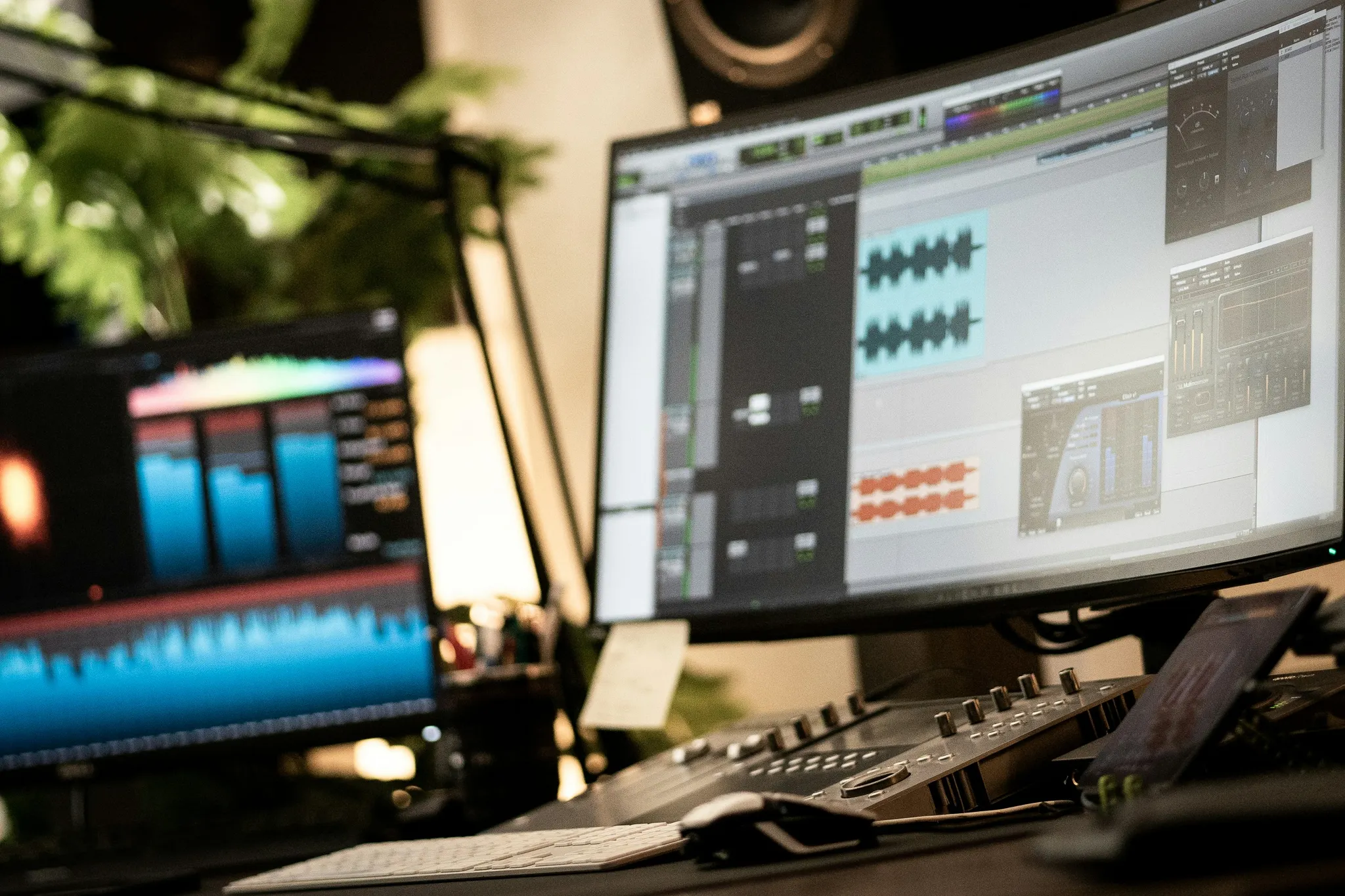
Amazon Music vs. Apple Music: Which Platform Wins in User Engagement?
As music streaming has evolved, various new services have emerged, competing for the interest of artists and labels and capturing the interest of listeners. However, rarely have we seen any legitimately contend with "The Big Two" (Spotify and Apple Music). But that may be changing. Amazon Music has been fiercely gaining ground over the past year and has been generating big numbers that demand attention. Although Amazon Music might not displace "The Big Two", it could very well change that duo into a trio. Amazon Music has been out-performing Apple Music recently in some key metrics across the industry, particularly in fan engagement. While that can of course change again quickly, it's a sign that Amazon Music may be a missed opportunity if it's not currently a priority in your strategy. In this blog post, we'll take a closer look at Amazon Music and Apple Music, comparing their features, user engagement, and recent developments to determine which platform deserves more attention in your next music marketing campaign.
A bit of context
Both services have carved out a significant space in the market, offering users a vast array of music, personalized recommendations, and innovative features that enhance the listening experience.
While Apple Music boasts a longer presence and a larger user base, Amazon Music has emerged as a formidable competitor in recent years. With its strategic moves, such as competitive pricing, an extensive music catalog, and seamless integration with other Amazon services, Amazon Music has managed to capture the attention of music enthusiasts and gain substantial ground in the streaming landscape.
Both platforms recognize the dynamic nature of the industry and the need to continuously adapt. As a result, Amazon Music and Apple Music are constantly engaged in introducing new features and refining their offerings to stay ahead of the curve and retain their user base. This ongoing evolution ensures that music lovers have access to an ever-improving streaming experience, but also makes it challenging for music marketers to prioritize which services to focus on.
Key differences between Amazon Music and Apple Music
In terms of availability, Amazon Music is accessible on a wider range of devices compared to Apple Music. Amazon Music can be streamed on various devices, including Amazon Echo smart speakers, Fire TV devices, and Android and iOS smartphones. Apple Music, on the other hand, is primarily designed for Apple devices, such as iPhones, iPads, and Macs. However, Apple Music can also be accessed on select Android devices and Windows computers through the iTunes application.
When it comes to pricing, Amazon Music offers three subscription plans to cater to different user needs. The most popular plan is Amazon Music Unlimited, which provides access to over 100 million songs for a monthly fee. Amazon Music also offers a free plan allowing fans to stream their music catalog with advertisements. Apple Music, on the other hand, does not offer a free plan, but has recently added student and family pricing as more flexible options for users. Pricing between the two services is fairly similar in terms of overall cost.
In terms of features, both Amazon Music and Apple Music offer a range of features to enhance the music listening experience. Both services offer personalized recommendations based on users' listening history and preferences, as well as curated playlists and stations. Amazon Music integrates nicely with Alexa-controlled devices and smart speakers. Similarly, Apple Music offers integration with Siri, Apple's voice assistant, for hands-free control of music playback.
Regarding audio quality, both Amazon Music and Apple Music offer high-quality audio streaming. Amazon Music supports Ultra HD audio, which provides a higher bitrate and improved sound quality compared to standard audio. Apple Music also offers lossless audio streaming, which preserves the original audio quality of the music. However, its recent launch of Spatial Audio is a game-changer in the HD audio space, introducing a new standard in how we listen to ultra high-fidelity music. Both services technically support Spatial Audio, but it's important to note Apple as the pioneer in this space as they will likely set the standard for changes and new features.
Recent changes and developments in the Amazon Music service offering
In recent times, Amazon Music has made significant strides to enhance its service offering and user experience. One notable development is the strategic partnership formed with the British Phonographic Industry (BPI). This collaboration aims to support emerging artists in the UK and Ireland by providing them with a platform to showcase their talent and reach a wider audience. Through this partnership, Amazon Music offers a dedicated section featuring emerging artists, enabling users to discover and enjoy fresh musical perspectives.
Furthermore, Amazon Music has expanded its music catalog to an impressive 100 million songs, catering to a diverse range of musical tastes and preferences. This vast library ensures that users have access to an extensive selection of music, from popular chart-toppers to obscure gems. Amazon Music's commitment to expanding its catalog demonstrates its dedication to providing users with a comprehensive and satisfying music streaming experience.
Another notable introduction is the "Amazon Music Artist Profiles" feature. This feature allows users to delve deeper into the lives and careers of their favorite artists. Artist profiles aren't new for users already familiar with them from Apple Music and Spotify, but Amazon Music makes this feature more seamless and intuitive for fans and artists. This focus on community might mean deeper connections between artists and fans.
Additionally, Amazon Music launched "Amazon Music HD," a new service offering high-definition audio streaming. This feature caters to audiophiles and music enthusiasts who seek exceptional sound quality. With Amazon Music HD, users can enjoy their favorite music in lossless audio formats, delivering a richer and more immersive listening experience.
These recent changes and developments in Amazon Music's service offering demonstrate the platform's commitment to innovation and its focus on user engagement. These ambitious strides provide further evidence that Amazon Music is serious about becoming a major contender in the music streaming landscape.
Trends and data show more fans engaging with Amazon Music than with Apple Music
Recent data suggests that Amazon Music is seeing more fan engagement than Apple Music. Besides streams, this type of on-platform engagement plays a major role in long-tail listenership and audience growth. When fans engage by pre-saving an album, following an artist profile, or saving a playlist, the streaming platform sees this as a major indicator of interest and is likely to automatically recommend music by that same artist in the future. The more you can get fans to engage like this, the more likely you are to grow your organic streaming numbers.
A recent case study conducted by the Sonikit team analyzed thousands of data points from major label and artist campaigns across our platform and witnessed an important pivot point in engagement. Prior to 2024, Spotify and Apple Music accounted for the most engagement (in this case, a sum of pre-saves, artist follows, and library adds). However, in recent months, we've seen Amazon Music overtake Apple Music in engagement metrics, becoming the second most-used platform by fans.

Engagement across streaming platforms June 1, 2023 - Dec 31, 2024

Engagement across streaming platforms Jan 1, 2024 - May 1, 2024
Now this isn't factoring in general listening data like streaming time and number of streams, but it's interesting to see how high active fan engagement is getting on the platform. It's a clear sign that there's a significant number of fans on Amazon Music and more importantly, that they're actively engaged. If you're not already including Amazon Music in every pre-save, follow link, or promotional call-to-action, now might be the time to make a change.
Conclusion: Amazon Music has huge potential for audience growth for artists and labels
While Apple Music maintains a larger market share and a broader global reach, Amazon Music's remarkable growth and user engagement should not be overlooked. Music marketers would be wise to give Amazon Music a more prominent place in their strategies, capitalizing on its strengths to tap into a highly engaged audience and drive meaningful interactions. However, it is crucial to acknowledge that Apple Music remains a significant player in the industry. Its extensive user base and global reach make it a valuable platform for reaching a vast and diverse audience.
The choice between Amazon Music and Apple Music ultimately hinges on the specific objectives and preferences of each artist or marketer. For those seeking a platform that nurtures genuine fan engagement, personalized experiences, and a burgeoning music community, Amazon Music stands as an exceptional choice. On the other hand, those prioritizing market share and global reach may find Apple Music to be a more suitable option. By embracing the unique advantages of both services, artists and marketers can navigate the ever-changing music landscape and achieve their goals in this dynamic and competitive industry.
How to grow your audience on Amazon Music
If you're ready to start growing your fanbase on Amazon Music, check out our comprehensive guide to boosting engagement on this quickly growing platform. Or take action immediately and create an Amazon Music pre-save or profile follow button in seconds with a free Sonikit account!



